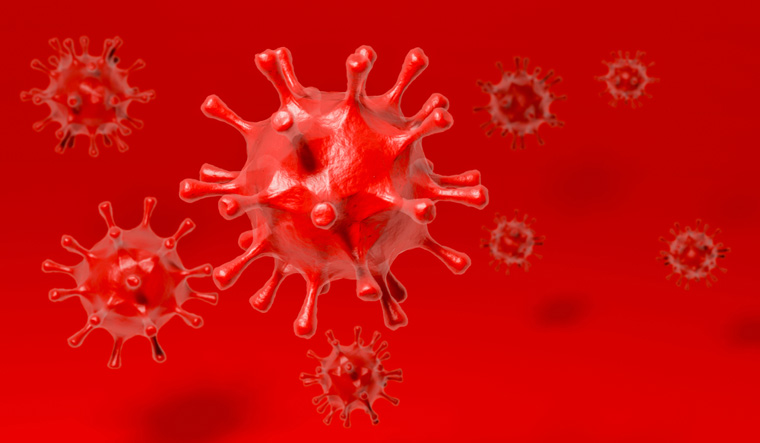SARS-CoV-2, the virus that causes COVID-19 disease, mostly uses two specific cell types in the nose as entry points to our body, reveals a new study. Scientists found that high levels of the proteins in the goblet and ciliated cells of the nose act as initial infection points for COVID-19, which could explain the high transmission rate of COVID-19 pendemic.
The identification of these specific cells of transmission at the entry points by researchers from the Wellcome Sanger Institute, University Medical Centre Groningen, University Cote d'Azur and CNRS, Nice and their collaborators, as part of the Human Cell Atlas Lung Biological Network, could help in the development of new methods to reduce transmission.
The study, published in Nature Medicine, predicts how a key entry protein is regulated with other immune system genes and reveals potential targets to reduce risk of transmission.
The researchers also points out those cells in the eye and some other organs also contain the viral-entry proteins.
In order to understand which cells could be involved in COVID-19 transmission, researchers analysed multiple Human Cell Atlas (HCA) consortium datasets of single cell RNA sequencing, from more than 20 different tissues of non-infected people. These included cells from the lung, nasal cavity, eye, gut, heart, kidney and liver. The researchers looked for which individual cells expressed both of two key entry proteins that are used by the COVID-19 virus to infect our cells.
"We found that the receptor protein—ACE2—and the TMPRSS2 protease that can activate SARS-CoV-2 entry are expressed in cells in different organs, including the cells on the inner lining of the nose. We then revealed that mucus-producing goblet cells and ciliated cells in the nose had the highest levels of both these COVID-19 virus proteins, of all cells in the airways. This makes these cells the most likely initial infection route for the virus," said Dr Waradon Sungnak, the first author on the paper from Wellcome Sanger Institute.
"This is the first time these particular cells in the nose have been associated with COVID-19. While there are many factors that contribute to virus transmissibility, our findings are consistent with the rapid infection rates of the virus seen so far. The location of these cells on the surface of the inside of the nose makes them highly accessible to the virus, and also may assist with transmission to other people, Dr Martijn Nawijn, from the University Medical Center Groningen in the Netherlands said.
The two key entry proteins ACE2 and TMPRSS2 were also found in cells in the cornea of the eye and in the lining of the intestine. This suggests another possible route of infection via the eye and tear ducts, and also revealed a potential for fecal-oral transmission.
When cells are damaged or fighting an infection, various immune genes are activated. The study showed that ACE2 receptor production in the nose cells is probably switched on at the same time as these other immune genes.
"As we're building the Human Cell Atlas it is already being used to understand COVID-19 and identify which of our cells are critical for initial infection and transmission. This information can be used to better understand how coronavirus spreads. Knowing which exact cell types are important for virus transmission also provides a basis for developing potential treatments to reduce the spread of the virus," said Dr Sarah Teichmann, a senior author from the Wellcome Sanger Institute.
The work was carried out as part of the global Human Cell Atlas consortium which aims to create reference maps of all human cells to understand health and disease. More than 1,600 people across 70 countries are involved in the HCA community, and the data is openly available to scientists worldwide.
ALSO READ
- 335 fresh Covid cases in India
- From polio to Covid-19: What we can learn from polio eradication for pandemic response
- Sudha Murty praises Vivek Agnihotri's 'The Vaccine War'
- China won't require COVID-19 testing for incoming travellers starting Wednesday
- North Korea to allow its citizens abroad to return home, a sign of further easing of pandemic curbs
"By pinpointing the exact characteristics of every single cell type, the Human Cell Atlas is helping scientists to diagnose, monitor and treat diseases including COVID-19 in a completely new way," said Professor Jeremy Farrar, Director of Wellcome.


